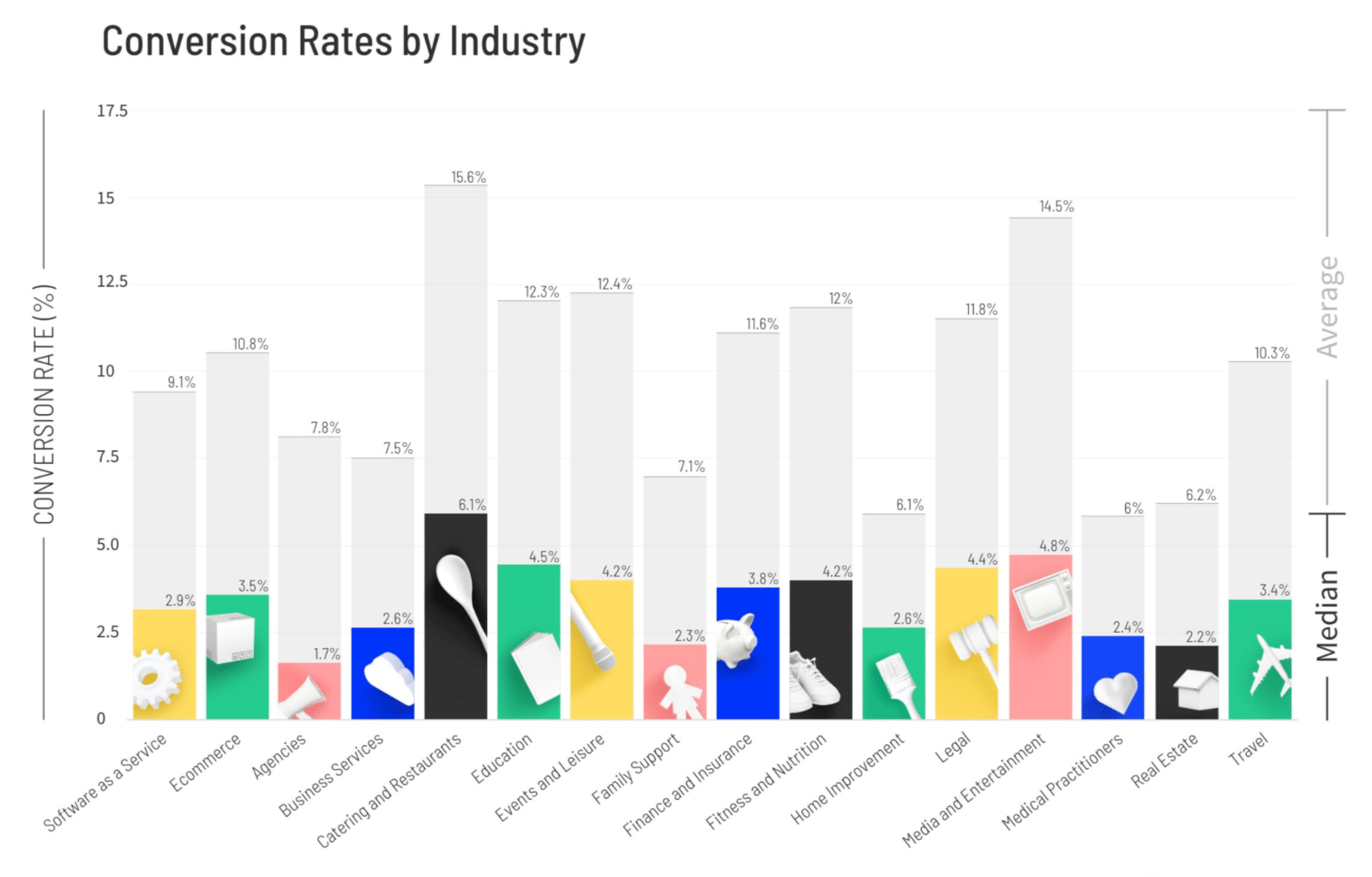
Four weeks ago I got accepted to CXL institutes’ conversion optimisation mini-degree scholarship. As part of the scholarship, I have to write an essay about what I learn each week. This is my fourth report.
A conversion rate is a measurement of how many people in a group do something. If 1000 people visit your website and 20 of them sign up to your mailing list, your conversion rate is 2% (20/1000 x 100).
Finding and driving quality traffic to your website is a marketing issue, conversion is what happens after they arrive. There can be overlap (for example, technical SEO, or ads being congruent with the landing page) but conversion rate optimisation is not marketing.
A low conversion rate means your operation has a leaky bucket. You can pour as much time and money into advertising and marketing as you want, if none of your visitors signup or buy your product then it’s amounts to nothing.
If your intention is to grow your business, or if you plan to spend money on paid advertising, then optimisation will help you waste as little of it as possible.
The Opportunity Cost of Optimisation
You must have at least 1000 transactions per month before it makes sense to invest in optimisation. A transaction can be anything you want to improve. For example, if you want to improve sign ups then you must have 1000 sign ups a month before you invest in conversion optimisation.
Good conversion rate optimisation work requires time and dedication. The tooling is not cheap and you have to pay skilled people to work on it full time. It is expensive work.
The main problem is that things take too long to test when you only have a few transactions each month. No one wants to wait for 35 weeks to find out if a change had any impact. With less than 1000 transactions a month, your time and attention are better invested in growth.
Another way to think about this: if you make a million dollars a year then a 10% improvement will result in an additional $100K. It will cost you at least $100K to pay for the salaries of the 2 or 3 people who will be working full time to achieve this.
Let’s say your company makes 10 million dollars a year, the exact same work will result in a million dollars. That will pay for the same salaries 10 times over.
Conversion rate optimization is a margins game. Without the margins, that 100K investment is better spent on people that will help your project grow, not optimise.
If you are not making 10 million dollars a year that doesn’t mean you have to put up with a leaky bucket. AB testing and experimentation is just one part of conversion rate optimisation game. It also encompases:
- customer research
- good design
- copywriting
- engineering
- and a keen understanding of analytics
Maybe it doesn’t make sense for you to invest in a dedicated conversion team. Covering the fundamentals above is good product development regardless. You can still make intelligent, data driven decisions without the reassurance of experimentation.
The 1000 transaction number above is just a rule of thumb. The actual number depends on your current conversion rate, the size of the change you are trying to detect and how much traffic you get. If you have these variables then this 2 minutes video will show you how to calculate exactly much traffic you need for your site:
What Kind Of Results Can You Expect?
A company called Unbounce analysed 34 thousand landing pages across 16 major industries. They found that the median conversion rate for all the landing pages analyzed was 3.2%.

This image is taken from the 2020 benchmark report. I will link to the report in the footer. You can go over their methodology and the insight they have for your specific industry.
It is important to point out that a conversion can mean many things: Buying, downloading, subscribing, it could mean a new lead, a phone call, an in-person appointment. The comparison is not fair. Still, it provides a practical overview of what a cross section of industries looks like.
The takeaway here is that if you are currently converting lower than your industry median your first goal should be to get to the median. Then you can aim for your industry average. The top-performers do much better, they had a median conversion rate of 25%. This means that a good optimisation team can see a 25% jump improvement in the first year (sometimes more since that was only the median for the top 25th percentile). These kind of improvements will only be in the first year as you address a lot of the low hanging fruit. A 5% to 10% improvement is a more sustainable yearly improvement after the first year.
In conclusion, conversion rate optimisation makes the most sense when you run a large online operation. A good rule of thumb for this threshold is 1000 transactions per month. If you have less than 1000 transactions you can still invest in good product design and use data to inform your decisions, but you won’t have the reassurance of experimentation.
Links Mentioned#
- This is the AB test calculator is used in the video https://abtestguide.com/abtestsize/
- Here is the Unbounce 20202 Benchmark report https://unbounce.com/conversion-benchmark-report/
- If you’d like to read more posts about conversion optimisation you can follow me on twitter @joshpitzalis.
- This is post 4 in a series. The rest of the posts are listed here.
- This is the CXL Institute’s conversion rate optimisation program I am currently doing.